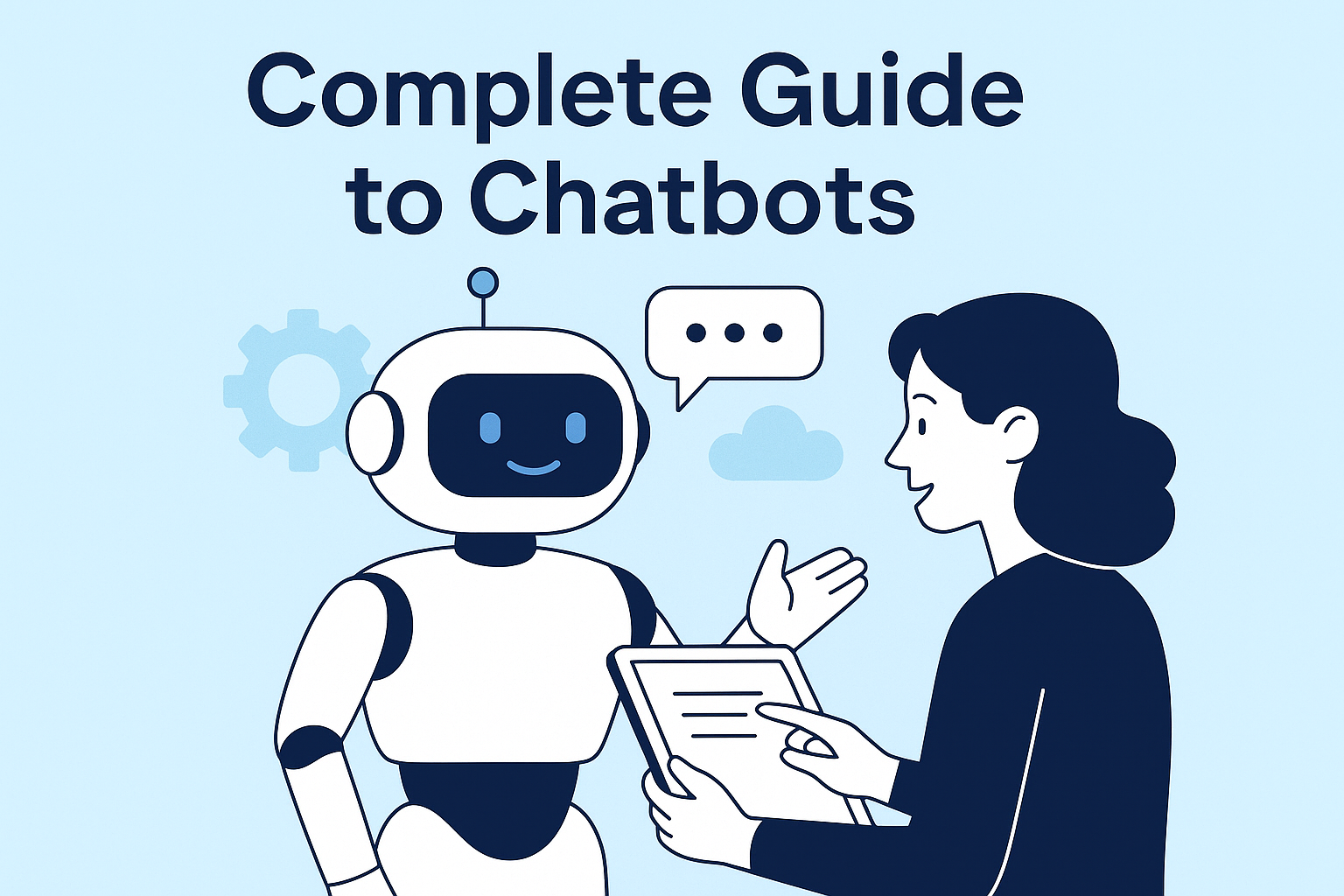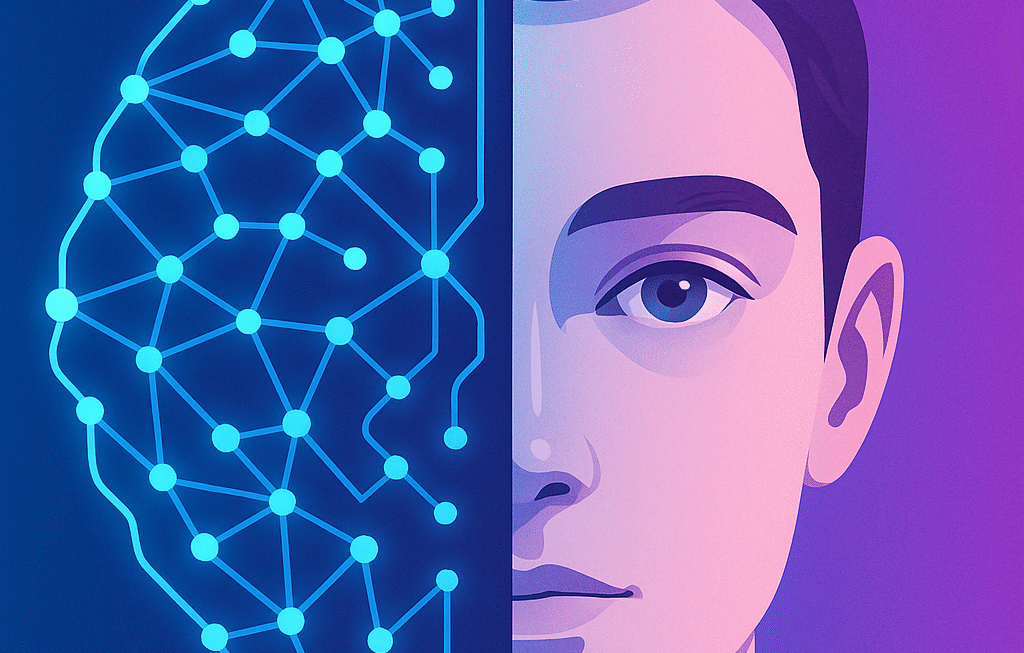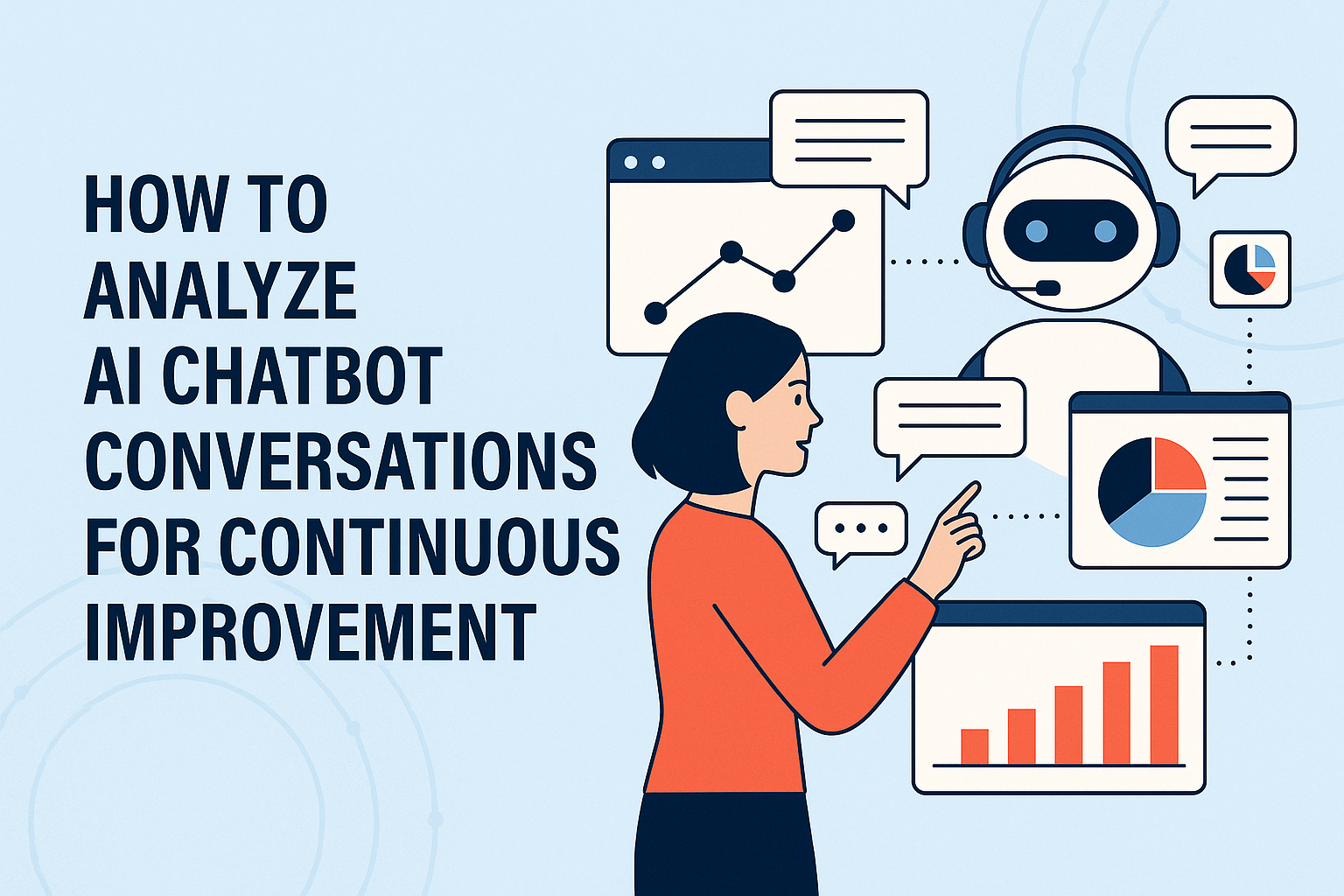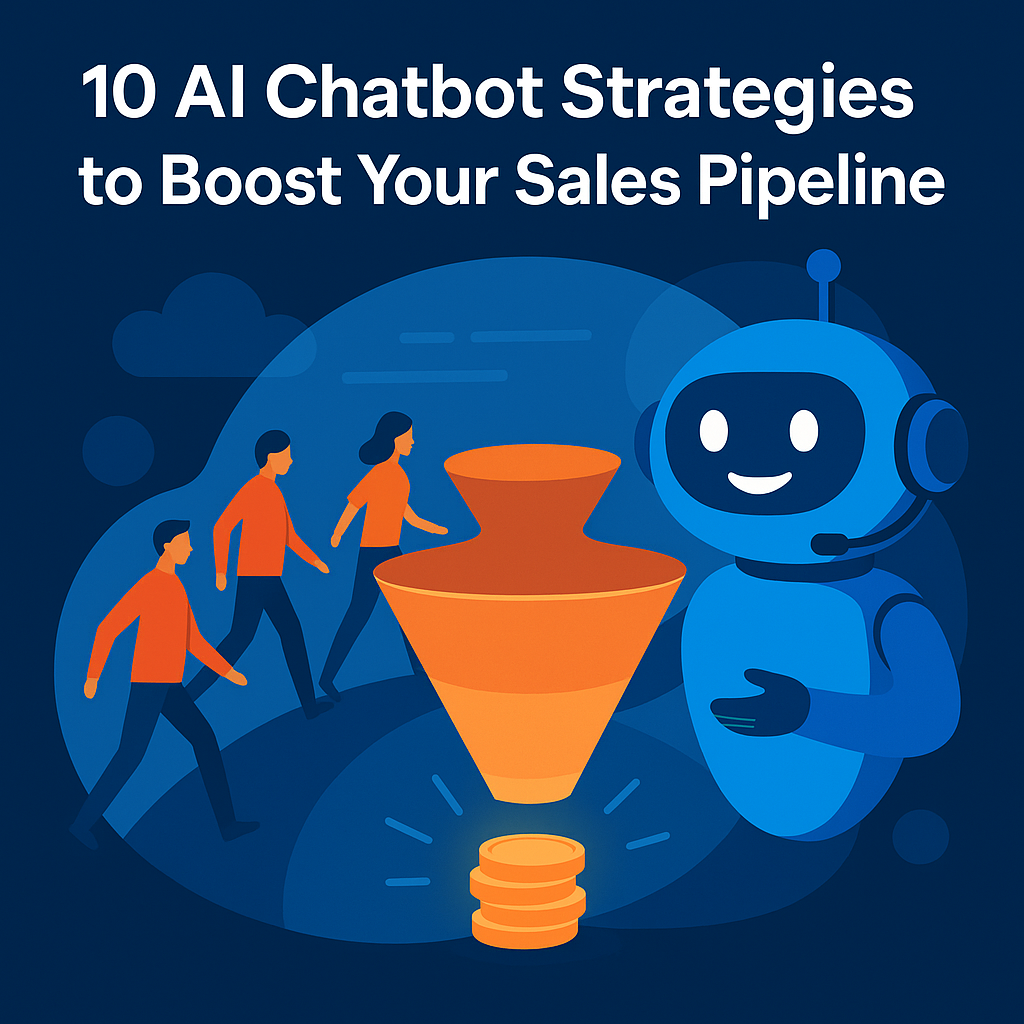Complete Guide to Chatbots – Everything Businesses Need to Know in 2025
Meta Description: This Complete Guide to Chatbots explains what chatbots are, how they work, why they matter, and how businesses can use them to improve customer support, sales, and engagement in 2025.

Introduction
The Complete Guide to Chatbots is designed for businesses, entrepreneurs, and professionals who want to leverage conversational AI. Chatbots have evolved from simple FAQ bots into powerful AI-driven assistants that improve customer service, streamline sales, and boost engagement. In this guide, you’ll learn everything about chatbots—what they are, how they work, their benefits, and how to implement them successfully.
1. What Is a Chatbot?
A chatbot is a software program that simulates human conversation, either through text or voice interactions. Modern chatbots use artificial intelligence (AI), natural language processing (NLP), and machine learning (ML) to understand user input and deliver accurate responses. Businesses deploy chatbots to answer customer queries, generate leads, process transactions, and provide 24/7 assistance.
In short, a chatbot acts as a virtual assistant that can handle repetitive tasks, reduce operational costs, and improve customer satisfaction.
2. How Do Chatbots Work?
The working of a chatbot depends on its type—rule-based or AI-driven.
- Rule-Based Chatbots: Follow pre-defined scripts or flows. Best for answering FAQs and handling predictable queries.
- AI-Powered Chatbots: Use AI, NLP, and ML to understand intent, adapt to user inputs, and learn from interactions.
Chatbots process user input, identify intent, and generate an appropriate response. With integration into CRM systems, knowledge bases, or e-commerce platforms, they deliver real-time, contextual responses to customers.
3. Why Do Businesses Need Chatbots?
The Complete Guide to Chatbots would be incomplete without explaining why businesses should adopt them. Here are the main reasons:
- 24/7 Availability: Customers receive instant answers anytime.
- Cost Efficiency: Chatbots reduce the need for large support teams.
- Lead Generation: Bots qualify leads and capture customer details automatically.
- Personalization: AI-driven bots deliver customized product recommendations.
- Scalability: Handle thousands of conversations simultaneously.
For modern businesses, chatbots are no longer optional—they’re essential tools for customer engagement and growth.
4. Types of Chatbots
There are different chatbot categories based on complexity and functionality:
- FAQ Bots: Handle simple, repetitive questions.
- Transactional Bots: Assist with bookings, orders, and payments.
- Customer Support Bots: Integrate with CRM to handle tickets.
- Sales Bots: Qualify leads and drive conversions.
- Voice Assistants: Use voice commands for hands-free interaction.
5. Key Benefits of Chatbots for Businesses
The Complete Guide to Chatbots highlights several advantages:
- Improved customer satisfaction through instant responses
- Reduced operational costs with automation
- Higher sales conversions from lead qualification
- Better customer insights with analytics and data collection
- Enhanced brand image by offering modern support
6. How to Implement Chatbots in Your Business
Implementing a chatbot involves several steps:
- Define Objectives: Decide whether your chatbot is for support, sales, or marketing.
- Choose a Chatbot Type: Select between rule-based or AI-driven bots.
- Select a Platform: Website, mobile app, WhatsApp, or Messenger.
- Integrate Data Sources: Connect CRM, knowledge bases, or FAQs.
- Train and Test: Refine the chatbot with real customer queries.
- Monitor and Improve: Use analytics to enhance responses over time.
7. Chatbot Use Cases Across Industries
Different industries apply chatbots in unique ways:
- E-commerce: Product recommendations, order tracking, upselling.
- Healthcare: Appointment scheduling, symptom checking, reminders.
- Banking: Balance inquiries, fraud detection, loan applications.
- Education: Student support, course FAQs, enrollment assistance.
- Travel: Booking confirmations, itinerary updates, customer support.
8. The Future of Chatbots
By 2025, chatbots are becoming more human-like, integrating with voice AI, and offering hyper-personalization. With advancements in generative AI, chatbots are evolving into AI copilots that assist employees, automate workflows, and provide predictive insights.
Internal Resources
Want to learn more? Explore our Chatbot Features page and check out our Best Practices Guide for deeper insights.
Conclusion
The Complete Guide to Chatbots provides everything you need to understand, implement, and optimize chatbots in your business. From answering FAQs to driving sales, chatbots are powerful tools for growth, efficiency, and customer satisfaction. Businesses that embrace chatbot technology in 2025 will stay ahead of competition and deliver exceptional customer experiences.




